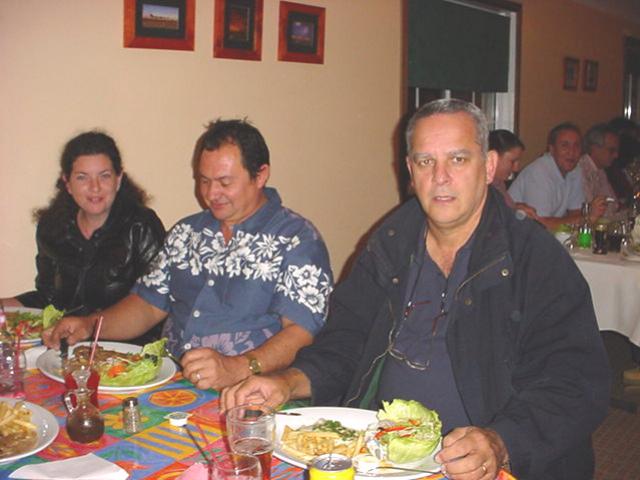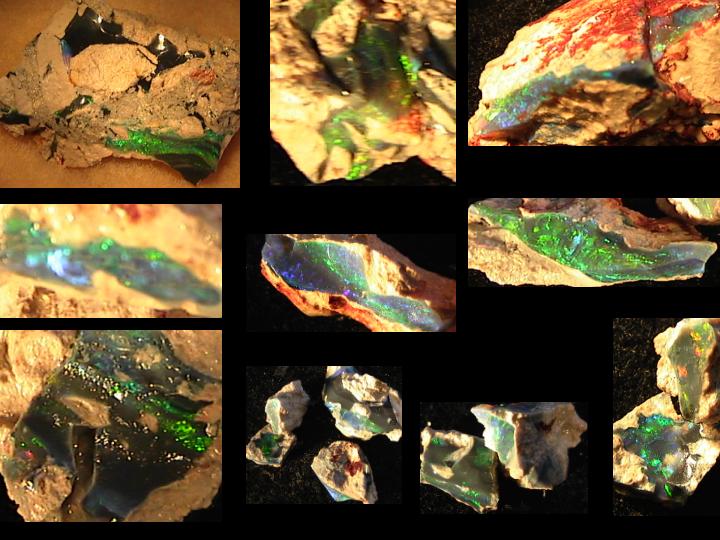

Lightning Ridge is a town in north-western New South Wales, in Walgett Shire, near the southern border of Queensland and about 1000 km from Nowra were we lived. Temperatures in summer can reach into the high 40 degrees Celsius, but below ground the temperature remains continually at around 22 degrees, year round.
The Lightning Ridge area is the only place in the world where black opals are mined as well as other opal gemstones.
The name Lightning Ridge is said to have originated when in the 1870s some passers-by found the bodies of a farmer, his dog and 200 sheep which had been struck by lightning. In 2001 it had a population of 1,826. The population is said to be highly variable as miners come and go over time. The traditional owners of the land around Lightning Ridge are the Yuwaalaraay people.
Lightning Ridge hosted an annual goat race in the town's main street, a rodeo on the Easter long weekend, a wheelie-bin races and horse racing the following day. However these activities have been discontinued mainly due to the changes in the demographics of the region.
Some artists have settled in and around Lightning Ridge. One of the most famous local Australian painters is John Murray who brings the impressions of the Outback. Paul Hogan (who has not seen Crocodile Dundee?) was born in Lightning Ridge.
Lightning Ridge is an important paleontological site, with fossils dating back to the Cretaceous period, 110 million years ago. The sandstone rock once formed the bottom of a shallow inland sea where the remains of aquatic plants and animals were preserved. The site is especially important as a source of fossils of ancient mammals which, at that time, were small creatures living in a world dominated by dinosaurs. The fossils are sometimes opalised and discovered by opal miners.
Since August 1992 when the Mining Act 1992 commenced, fossicking licences have not been required for fossicking in New South Wales as long as the landholder consents. Lightning Ridge has an abundance of hot water from a bore spring into the Great Artesian Basin and offers two hot water pools for bathing.
This section of the website tells about our visit to Lightning Ridge and the reunion with a lost cousin. It also attempts to show the unique characteristics of the town and its people.

Francisco, Lyn and I

Some of Francisco's opals
After driving almost 1000 km, 920 to be precise, we arrived at Lightning Ridge. As we drove through the main street it looked a typical Australia village but the scenery around it showed lots of small mounds scattered all over without any apparent order. They were the entrance of the opal "mines"
In these photos we are trying to convey our first impressions of Lightning Ridge.
One day I received an email from a Francisco Freitas telling me that he saw my family tree in this website and he suspected that we were relatives. His grandmother was called Guilhermina same as my grand untie and we were both from Angola and Bela Vista.
I got very excited with the possibility of having relatives in Australia and questioned my father about it. He confirmed that he heard that we had a relative (Francisco's father) that went to Australia after the independence of Angola.
We jumped in the car and drove the 1000 km that separated us from Lightning Ridge and confirmed that Francisco the Freitas was in fact our cousin.
A sample of the photos I took during our visit to Lightning Ridge. I hope you like them.
We spent a day fossicking for opals at Francisco's new mine in Glengarry a new site near Lightning Ridge. Francisco's mine is not like the average mine in Lightning Ridge. With his skills as a mechanic he built several systems to reduce the hard work of mining for opals.